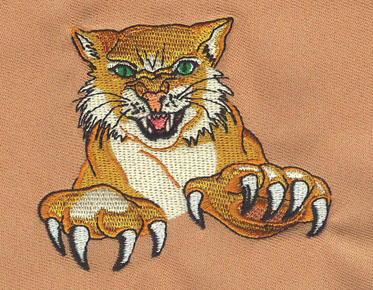The Future of Embroidery Digitizing - 5 Things to Watch
Embroidery digitizing is a rapidly evolving
field, with new technologies and techniques emerging all the time. As we look
to the future, there are several key trends and developments that are worth keeping
an eye on. Here are 5 things to watch in the world of embroidery digitizing:
Artificial Intelligence and Machine Learning: One of the most exciting developments in the field of embroidery digitizing is the use of artificial intelligence and machine learning. These technologies can be used to automate the digitizing process, reducing the time and effort required to create high-quality designs. Additionally, AI and ML can be used to improve the quality and accuracy of the designs themselves, by analyzing patterns and identifying areas that need to be refined.
3D Embroidery: Another trend to watch is the use of 3D technology in embroidery digitizing. This allows for the creation of more complex and detailed designs, as well as the ability to create designs that have a more three-dimensional look and feel. This can be achieved by using 3D software to create the design, and then using specialized embroidery machines to create the final product.
Cloud-based Platforms: As more and more businesses move their operations to the cloud, it's likely that we'll see an increase in the use of cloud-based platforms for embroidery digitizing. These platforms allow for easy collaboration and sharing of designs, as well as the ability to access and edit designs from anywhere with an internet connection.
Virtual Reality and Augmented Reality: These technologies have the potential to revolutionize the way we create and view embroidery designs. With virtual reality, designers can create designs in a 3D environment, while augmented reality allows for designs to be viewed in the context of the real world. This can be a powerful tool for visualizing and presenting designs, as well as for training new embroidery digitizers.
Sustainable Digitizing: As the world becomes increasingly focused on sustainability, it's likely that we'll see more and more businesses and individuals looking for ways to digitize embroidery designs in an environmentally friendly way. This could include the use of eco-friendly materials, such as organic cotton or recycled polyester, as well as the use of digital techniques that minimize waste and reduce energy consumption.
In conclusion, embroidery digitizing is a field that is constantly evolving, with new technologies and techniques emerging all the time. Keeping an eye on trends such as artificial intelligence, 3D embroidery, cloud-based platforms, virtual reality and augmented reality, and sustainable digitizing can help businesses and individuals stay ahead of the curve and stay competitive in this exciting field.



